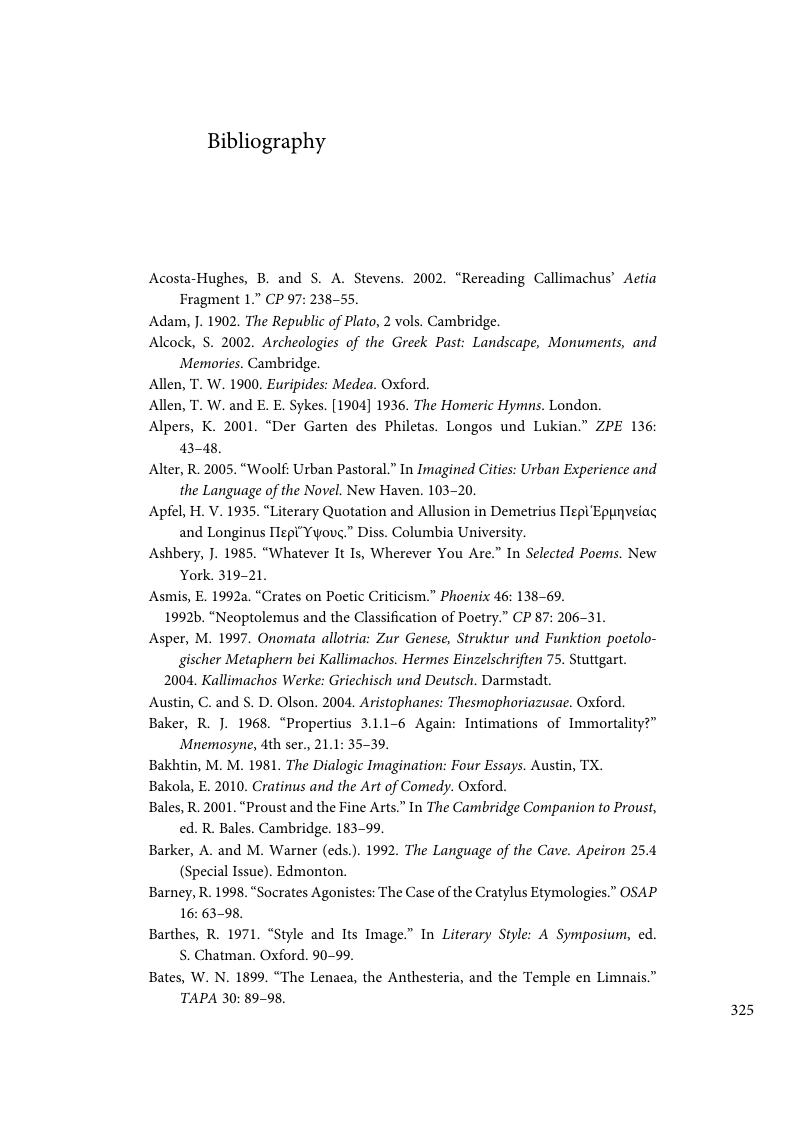Book contents
- Landscape and the Spaces of Metaphor in Ancient Literary Theory and Criticism
- Landscape and the Spaces of Metaphor in Ancient Literary Theory and Criticism
- Copyright page
- Dedication
- Dedication
- Contents
- Book part
- Glossary
- Introduction
- 1 Mimesis, style, and the spaces of metaphor
- 2 Rural resources
- 3 On the road
- 4 Rural retreats
- 5 Diaspora
- 6 On the road again
- 7 In Plato’s garden
- Epilogue
- Bibliography
- General index
- Index locorum
- References
Bibliography
Published online by Cambridge University Press: 05 December 2015
- Landscape and the Spaces of Metaphor in Ancient Literary Theory and Criticism
- Landscape and the Spaces of Metaphor in Ancient Literary Theory and Criticism
- Copyright page
- Dedication
- Dedication
- Contents
- Book part
- Glossary
- Introduction
- 1 Mimesis, style, and the spaces of metaphor
- 2 Rural resources
- 3 On the road
- 4 Rural retreats
- 5 Diaspora
- 6 On the road again
- 7 In Plato’s garden
- Epilogue
- Bibliography
- General index
- Index locorum
- References
Summary

- Type
- Chapter
- Information
- Publisher: Cambridge University PressPrint publication year: 2015



